by Dot Cannon
“Shouldn’t the car know?” asked Gestigon CEO Moritz von Grotthuss.
It was Tuesday afternoon at San Jose’s McEnery Convention Center. The 2016 SENSORS Expo would start on Wednesday.
And Pre-Conference Symposium 3 had resumed after a lunch break.
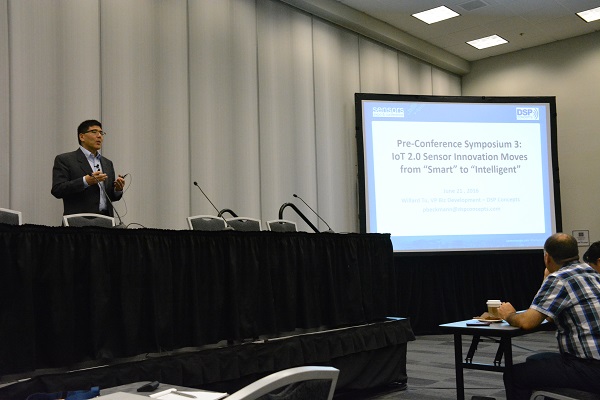
Speakers, moderated by DSP Concepts VP of Business Development Willard Tu, had been examining the trends in the sensor industry–and their possible effects on daily life in the future.
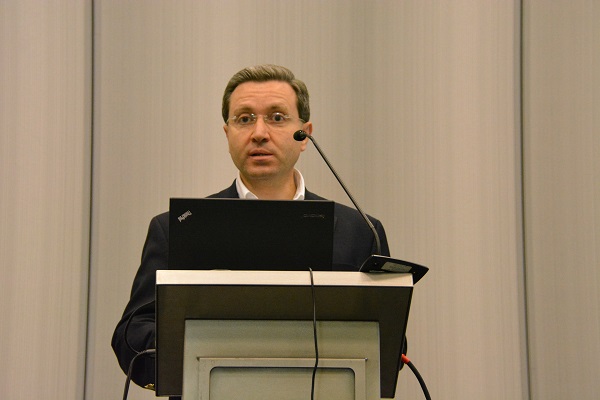
The afternoon program started with a presentation on “Intelligent Sensors for Autonomous Vehicles” by Quanergy CEO and co-founder Louay Eldada.
Early on, he introduced his audience to LiDAR, which he described as “the most accurate perception sensor.” LiDAR, he said, gives a highspeed 3D image of the environment–and works perfectly in pitch darkness.
It’s also small enough to hide. And Louay said the price of this sensor will soon be going down from its price of several hundred dollars each.
“They’re going to be in the helmets of firefighters, soldiers. They’re going to be in clothing. You can take one and stick it on your dashboard, now you have a self-driving car.”
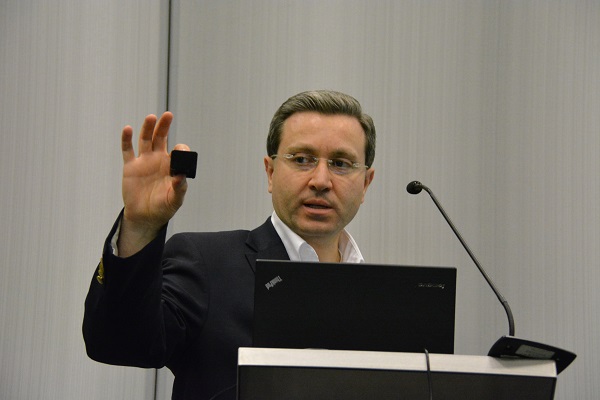
“The size of the chip is what you see right here. Four by five millimeters,” he said.
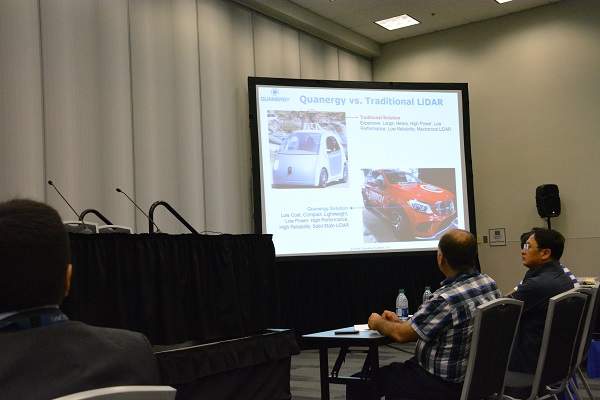
“We like a lot what Google has done (with their self-driving car) but obviously no one’s going to buy a vehicle with a big contraption on top. (On ours) you just don’t see the sensors, and that’s the way it should be.”
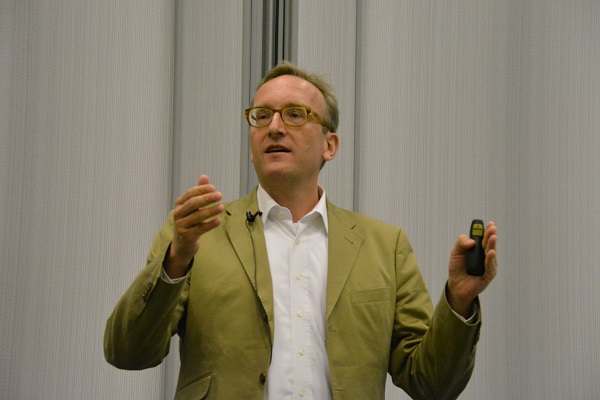
Gestigon CEO Moritz von Grotthuss, in his presentation on “New UIs Gesturing for Attention”, raised the question of what an “intelligent” car’s knowledge should include.
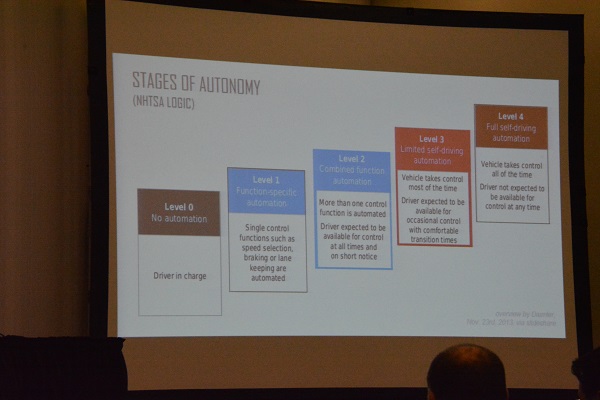
Displaying this slide outlining the capabilities of self-driving cars, he told his audience, “Today…we’re between level zero and level one. Tesla is at level two.”
Moritz drew on his own driving experiences as he explored future “intelligent car” capabilities.
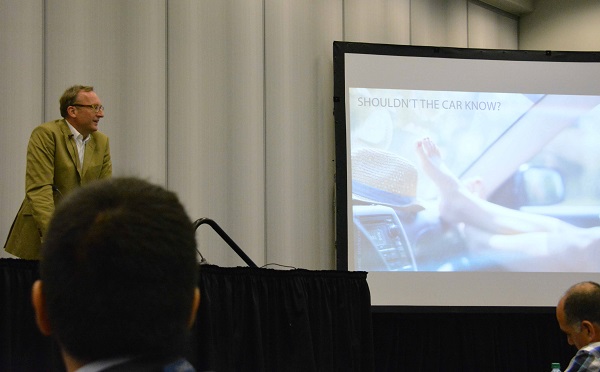
“I was in Los Angeles last summer and I saw a woman in a car (with her feet on the dashboard, driving). If I do that, shouldn’t the car know?”
A future “intelligent” vehicle, he said, had a number of ways to react to this type of “creative” driving. “Does that mean the car stops, or does it say, ‘I’ll do a beep,..’take down your legs’? Or does it reprogram itself (to minimize damage in the event of a crash)?”
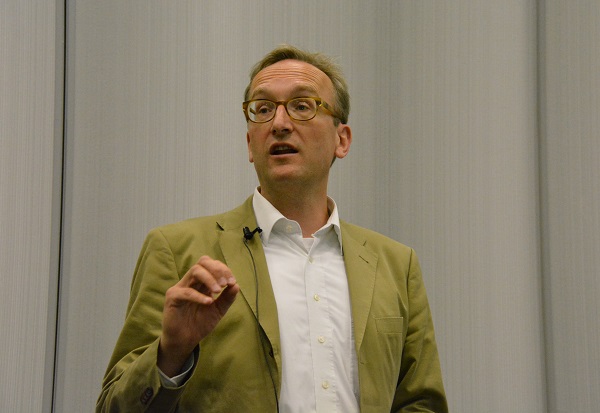
Moritz also discussed how far an intelligent future car could be involved in decision making. “If they do it right the car should be able to take over control. But the tricky question is, how does (it) give control back?” There would be situations, he said, that would amount to the car using its “best guess” about the driver’s capabilities.
“What happens if I pick up the phone?” Moritz asked the audience. “Maybe the distance control starts kicking in, more accurately than if the car knows I’m fully aware. Or, it senses when I’m drowsy and tells me I need to pull over and have a coffee.”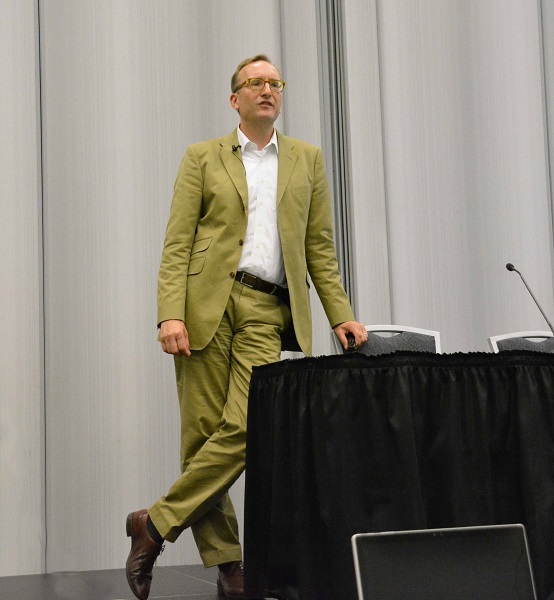
“I hate that. I hate if the car tells me what I should do.”
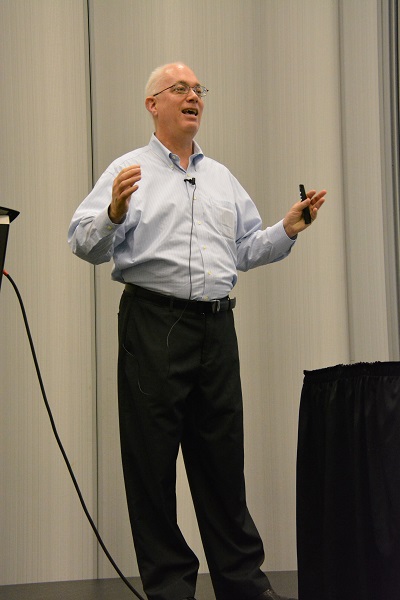
The next speaker, NXP Semiconductors System Engineer Mike Stanley, offered a workshop on machine learning during his presentation, “Tools and Lessons Learned for Sensor Data Analytics”.
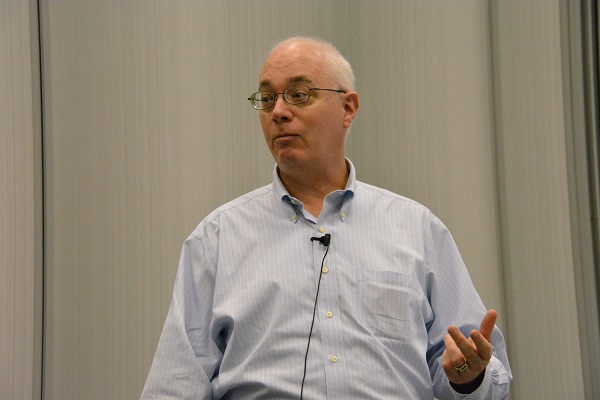
“How do we find patterns in our data?” he began.
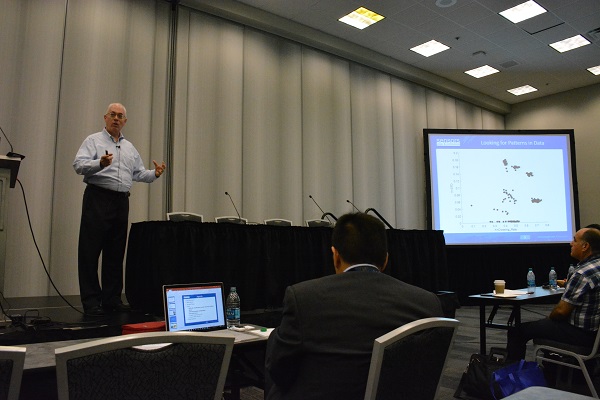
Then, he demonstrated exactly how he had done that himself–with a set of data he took from a small pump.
“If you pay attention and record…the state of the system when you recorded each data point, now you can do something with the data,” he said. “Now this system can tell me what my state is. I can recognize that state.”
And what works for analyzing data on a pump, will work for collecting information on technology.
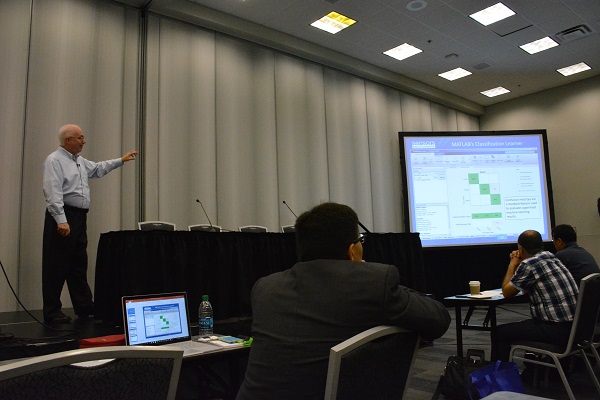
Mike went on to examine various systems for classifying data–including one that had several audience members taking out their cell phones to photograph the link.
“Knime is now open-sourced. You can download this for free,” he said.
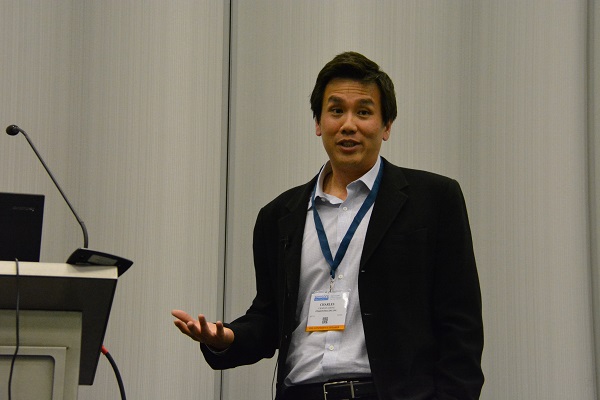
Pixart Strategic Marketing Manager Charles Chong illustrated some of the ways low-power processing is leading up to a more connected living space.
“The low power is coming and it’s going to drive the (“smart”) devices into your home as well,” he said, during his presentation on “CMOS Image Sensors–More Than Capturing Good Images On Your Smartphone.”
The trend, he said, was for many sensors to be working together. And those sensors were a part of an evolving application: SLAM, or simultaneous location and mapping. SLAM, Charles said, would be very useful in the robotics world.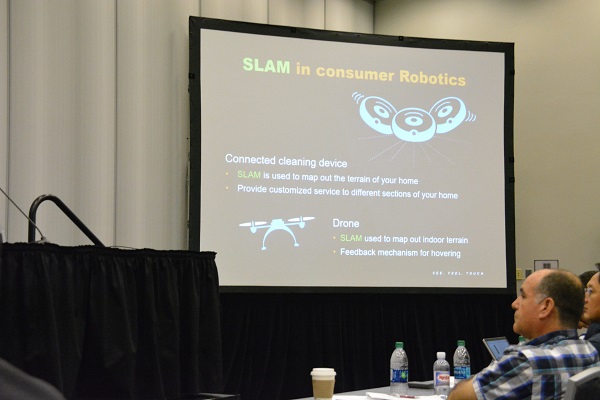
“It’s going to be able to map out your home to provide customized service,” he predicted. “Think of this as a big mouse running around your house. It’ll eventually be able to tell you, ‘I need to clean the living room twice a week’.”

Charles added that SLAM could be a solution to a problem among drone enthusiasts, as well. “Over time, a drone drifts,” he said. “So, they’ve been using a sensor. It’s able to actually pull it back.”
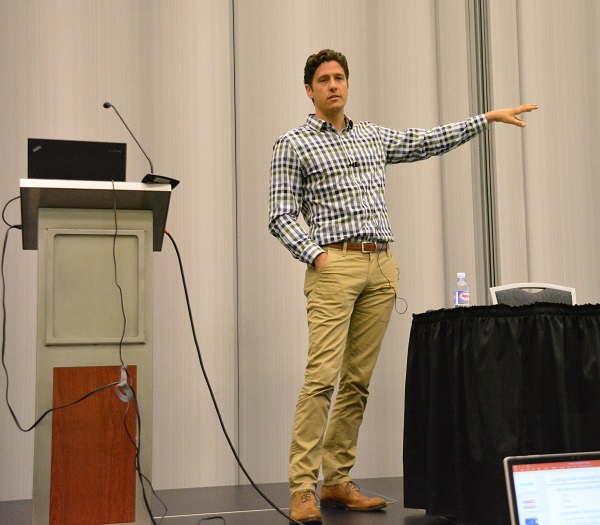
“Interesting, but not useful enough to be life-altering” is how Scott Hanson characterized today’s “smart” devices during the day’s final presentation.
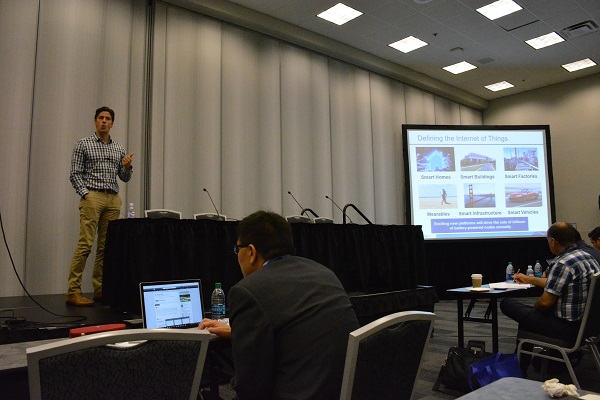
Scott, who is the CTO of AmbiqMicro, identified six areas of the Internet of Things during his talk, “Making Smart Devices Intelligent with Ultra-Low Power Sensor Processing”.
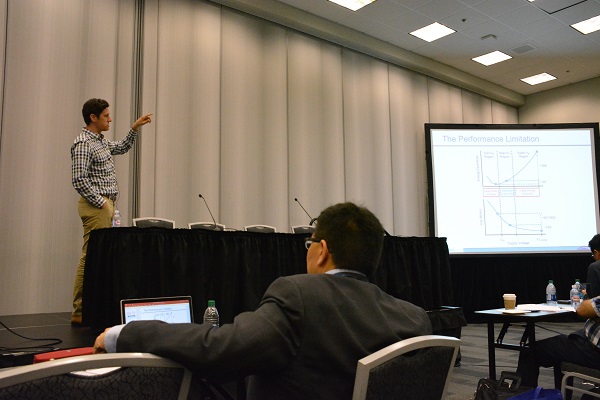
While “smart” devices are feasible today, Scott said,”intelligent” ones really aren’t–due to energy being a problem. A “smart” device, according to the slides he presented, might have a battery life of twenty-three days. An “intelligent” one’s battery life would not even last for a day and a half!
But, AmbiqMicro is working on a solution.
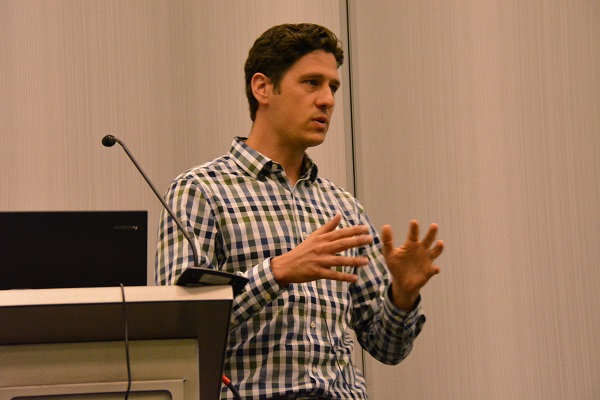
“My company is building extremely low-powered chips,” Scott explained. “We built an entire company around this concept. We did research into how low you can run voltage.”
AmbiqMicro, he said, was currently shipping two products that ran on extremely low power: a micro controller and a real-time clock.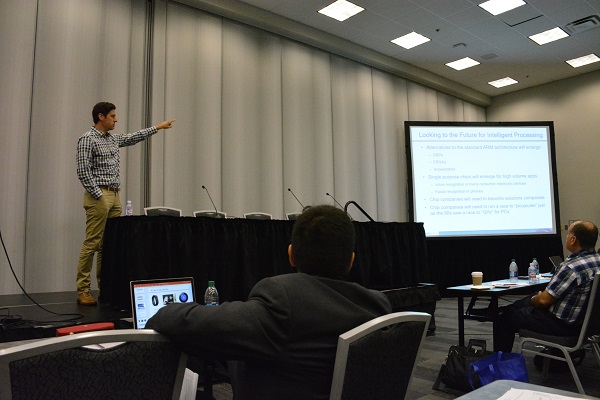
“As I look forward, I see a lot of hope,” Scott commented, listing future alternatives that might one day make “intelligent” devices a reality.
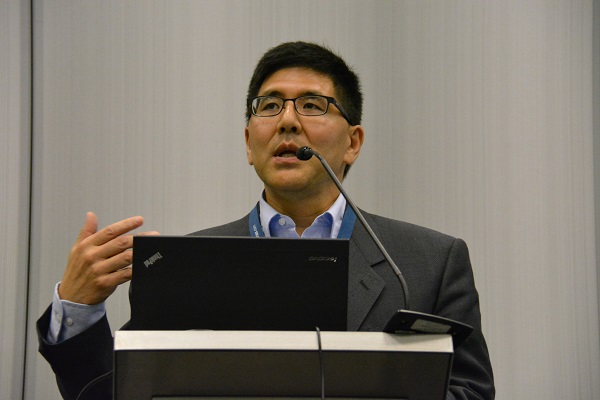
In his closing remarks, Will Tu referenced the challenges of moving forward.
“Intelligence has a price…energy and battery life,” he commented. “The big problem we have in the whole market right now is scarcity of resources. (But) the sensor innovation is definitely coming.
“You’ve got the information. Now, it’s a challenge of going off and doing something about it.”

